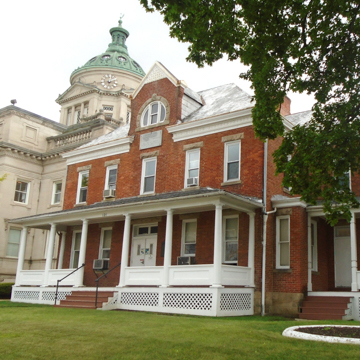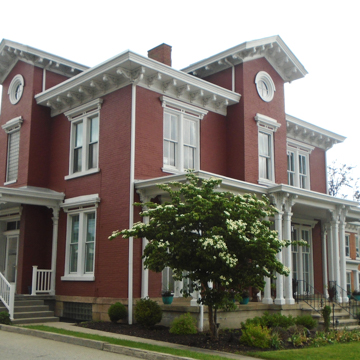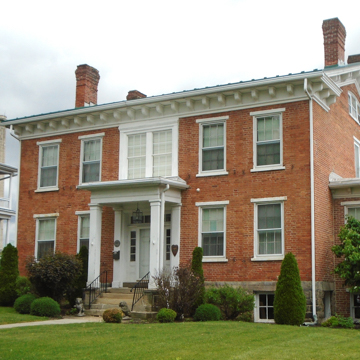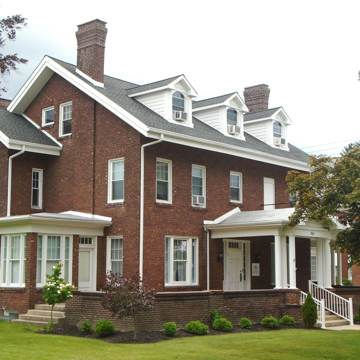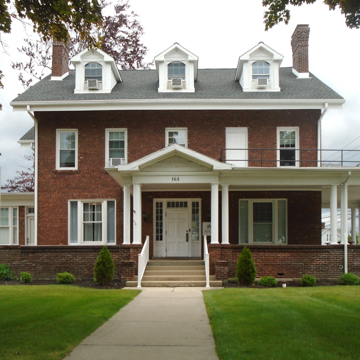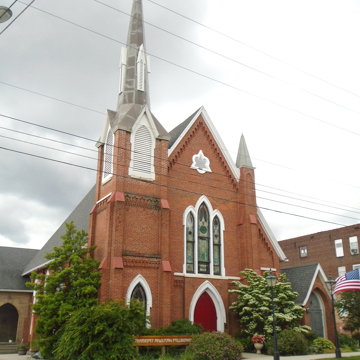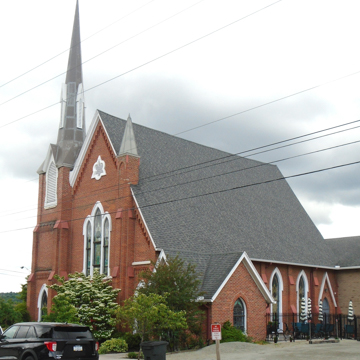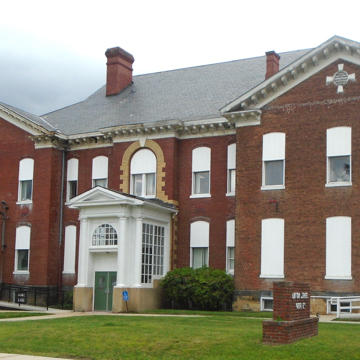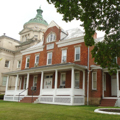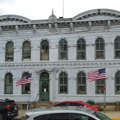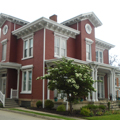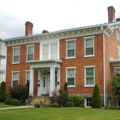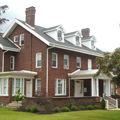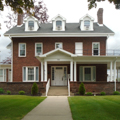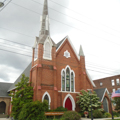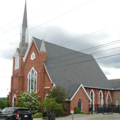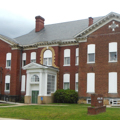East Union Street begins with the courthouse at Main Street, and continues east into a residential area of predominantly high-style brick houses dating from the 1840s through 1910. Immediately east of the courthouse, a sheriff's house and county jail have occupied this site since 1802. The present sheriff's house (1856), added to an existing jail by John Mong, has
The Lansberry house (1869) at 139 E. Union Street in the Italian Villa style is similar to the designs in Samuel Sloan's pattern books, but with a central dormer instead of a tower. Opposite at 132 E. Union Street, St. Paul's Presbyterian Church is a red brick, Gothic Revival building c. 1870. At 147 E. Union Street, the Edward Scull house (1856) has a Greek Revival portico and sidelights, and a transom around the door. The house was moved west to make room for Edward's son George's house (165 E. Union), which was designed in 1917 by the local firm of Walker and Mong. That firm designed many of the Colonial Revival houses in the city. A frame house (c. 1880) at 214 E. Union Street has a deep front porch, sawn ornament, and fanciful roof slates. Across the street, the two-story brick former school (1897) at the corner of E. Union Street and N. Kimberly Avenue now houses the district court and other offices.


